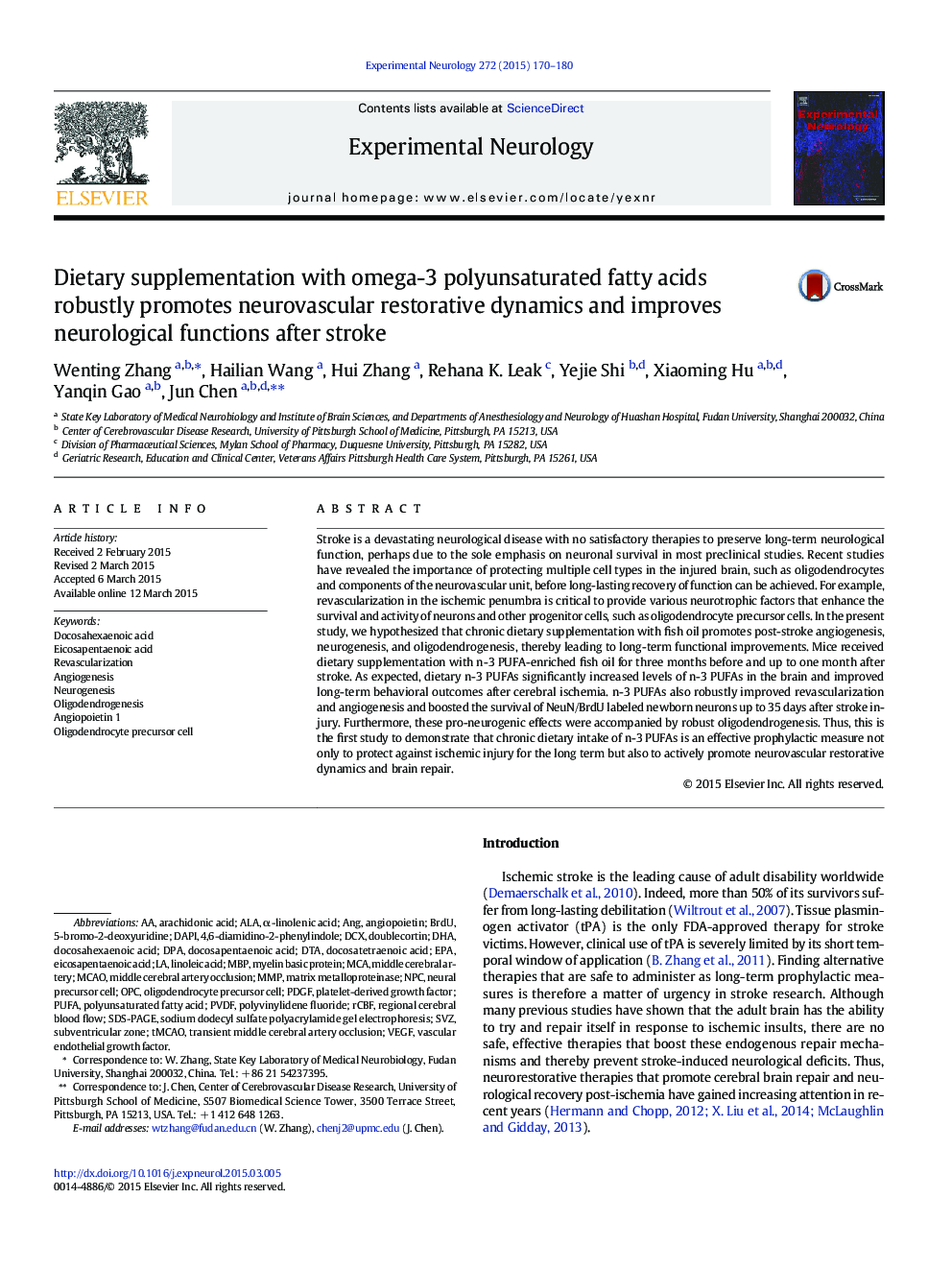| Article ID | Journal | Published Year | Pages | File Type |
|---|---|---|---|---|
| 3055392 | Experimental Neurology | 2015 | 11 Pages |
•n-3 PUFAs improve long-term neurobehavioral outcomes after stroke.•n-3 PUFAs stimulate post-stroke revascularization and angiogenesis.•n-3 PUFAs upregulate angiopoietin 1 and angiopoietin 2.•n-3 PUFAs promote the survival of newborn neurons after stroke.•n-3 PUFAs enhance post-stroke oligodendrogenesis and axonal remyelination.
Stroke is a devastating neurological disease with no satisfactory therapies to preserve long-term neurological function, perhaps due to the sole emphasis on neuronal survival in most preclinical studies. Recent studies have revealed the importance of protecting multiple cell types in the injured brain, such as oligodendrocytes and components of the neurovascular unit, before long-lasting recovery of function can be achieved. For example, revascularization in the ischemic penumbra is critical to provide various neurotrophic factors that enhance the survival and activity of neurons and other progenitor cells, such as oligodendrocyte precursor cells. In the present study, we hypothesized that chronic dietary supplementation with fish oil promotes post-stroke angiogenesis, neurogenesis, and oligodendrogenesis, thereby leading to long-term functional improvements. Mice received dietary supplementation with n-3 PUFA-enriched fish oil for three months before and up to one month after stroke. As expected, dietary n-3 PUFAs significantly increased levels of n-3 PUFAs in the brain and improved long-term behavioral outcomes after cerebral ischemia. n-3 PUFAs also robustly improved revascularization and angiogenesis and boosted the survival of NeuN/BrdU labeled newborn neurons up to 35 days after stroke injury. Furthermore, these pro-neurogenic effects were accompanied by robust oligodendrogenesis. Thus, this is the first study to demonstrate that chronic dietary intake of n-3 PUFAs is an effective prophylactic measure not only to protect against ischemic injury for the long term but also to actively promote neurovascular restorative dynamics and brain repair.
